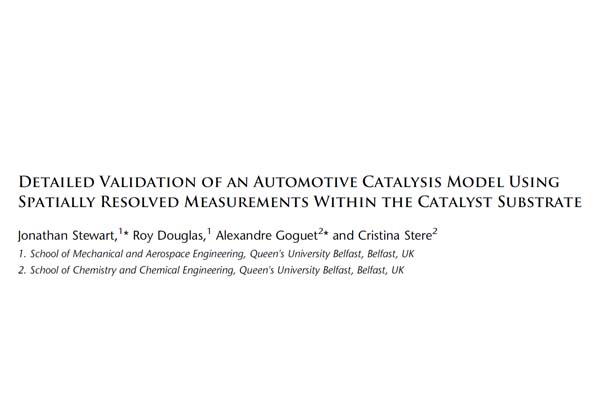Paper – Detailed Validation of an Automotive Catalysis Model Using Spatially Resolved Measurements Within the Catalyst Substrate
by Victoria McConnell | Jan 11, 2017 | AUTO, Whitepaper

ABSTRACT
Many kinetic models have appeared in literature in past decades using two main approaches: the traditional global kinetics approach, or the more complex micro‐kinetics approach. Whether global or micro‐kinetics, kinetic models have been based on experimental data obtained at the end of the monolith. The experimental procedure using end pipe analysis may give an accurate overview of the reaction mechanisms that occur; however, the lack of information from within the catalyst can ultimately lead to inaccuracies in the kinetic model and parameters used.
Using SpaciMS, a spatially resolved experimental technique developed at the Queen’s University Belfast, information from within the catalyst can be obtained. This minimally invasive technique provides detailed information of the gas concentration and temperature profile from inside the catalytic monolith. This paper presents a kinetic model and simulations validated against experimental data obtained from three positions inside the catalyst monolith at 2, 14, and 26mmin, using data from the SpaciMS. Also, simulations of end pipe analysis, using a commercial reactor, for the CO oxidation are presented and analyzed. The simulations presented are for varying concentrations of both CO and O2 (0.5%and 1%CO, 0.5%and 2%O2) for both the global and micro‐kinetic approach.











